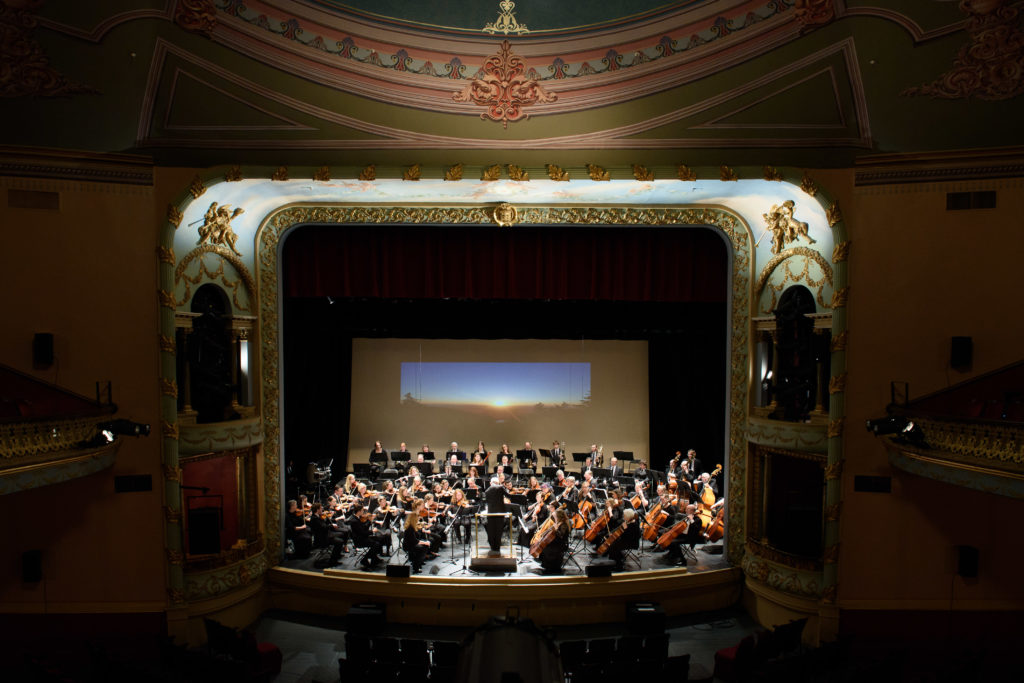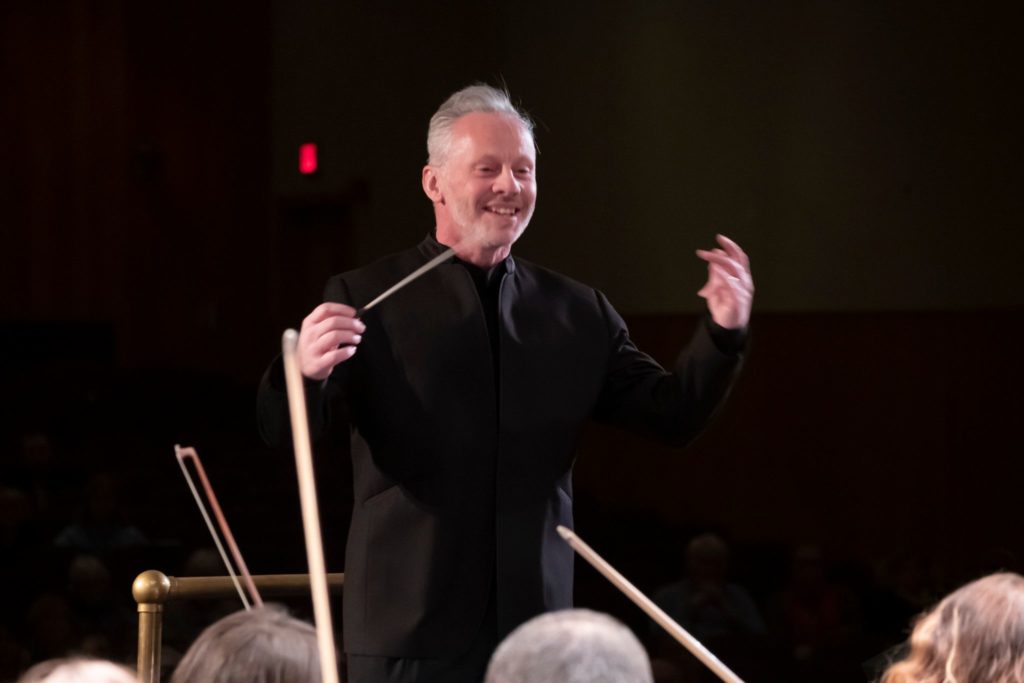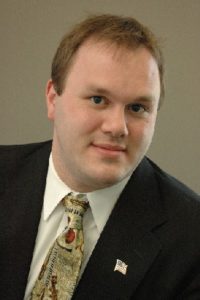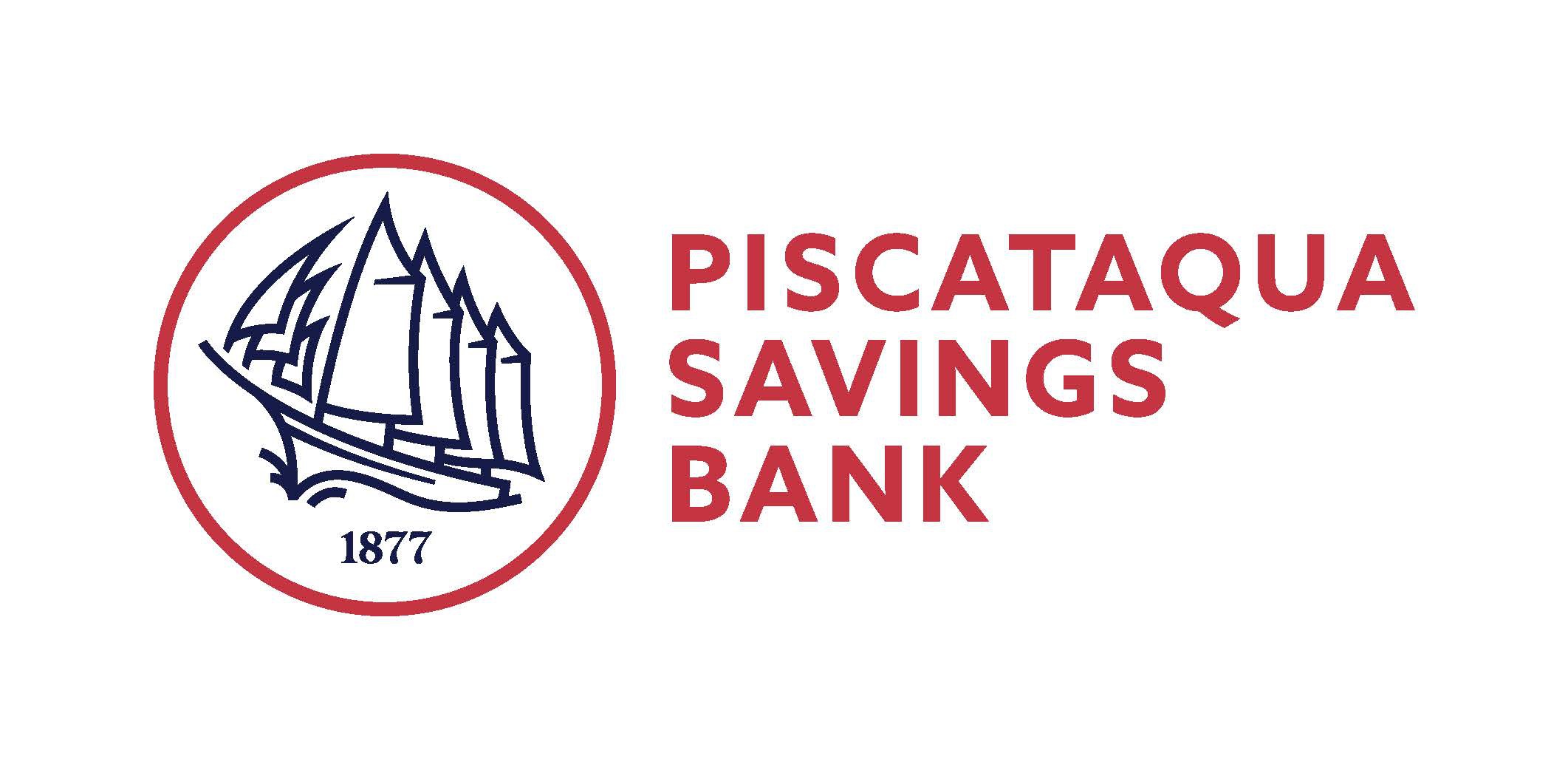Presenting Sponsor
Based in Greenland, New Hampshire, Auger Building Company has been building and remodeling high-end custom homes and boutique commercial since 1984. Renowned for artisanship and mastery of complex projects, Auger Building Company is an award-winning team with projects featured in several national trade publications, including Remodeling Magazine where Ben Auger was selected as one of the country’s top 50 remodeling contractors. For Ben and his crew, every construction project is an opportunity to excel creatively and deliver exceptional and lasting value.
Sponsors
Message from the President

The Portsmouth Symphony Orchestra heads into our 26th season grateful to be part of the vibrant Seacoast community that supports the arts and culture organizations that bring us together.
The PSO’s mission is to entertain, educate, and encourage the audiences of today and tomorrow. Each year, we have the opportunity to build on past successes and to explore new ways to connect people to great classical music. This year, we are particularly excited to perform the jointly commissioned commemorative work, At This Point, written by Gregory Brown in honor of Portsmouth’s 400th anniversary. This reflective piece delves into the full range of Portsmouth’s history. Like the city from which we draw our name, the PSO has evolved and grown over the years. As we embark on our next 25 years and beyond, it feels appropriate to begin on a retrospective note.
Each season, the PSO relies on the contributions and investment of generous corporate sponsors, committed individual donors, community partners, and of course you, the audiences who purchase tickets and attend our performances. We are thankful for your collective support.
The PSO is fortunate to have a dedicated board of directors, an inspirational Music Director in John Page, and an array of talented musicians that bring our programs to life.
If this is your first PSO concert, welcome! If you are an annual subscriber, thank you for your continued support. We’re happy to see you again.
On behalf of everyone at the PSO, we hope you enjoy the season that we have prepared for you.
David Young
President of the Board of Directors
Message from the Music Director

Anchored by the commissioned work, At This Point by Gregory Brown, which celebrates Portsmouth’s 400th anniversary, the PSO’s 2023-2024 season is about reflection, exploration, and evolution.
In November, we pair Brown’s new work with two pieces by composers from traditionally underrepresented groups. The March concert provides an international counterpoint by exploring different facets of French musical creativity. In June, we’ll perform Tchaikovsky’s beloved Symphony No. 5, a masterpiece the PSO has not performed in more than a decade. And of course, in between we’ll celebrate the holidays together at our just-for-fun Pops! performances.
In addition to our mainstage concerts, we hope you’ll join us at our Family Matinees chamber music series. These are a wonderful way to connect music lovers of all ages with the wide repertoire that chamber music offers.
From a new work to an old favorite, this season promises to embody what all anniversaries are meant to do—allow for acknowledgment and appreciation of all that has come before and to renew our commitment to all that lies ahead.
We’re looking forward to making music together and are so happy you are here to share it with us.

John Page
Music Director
Program Listing
Les Offrandes Oubliées | Olivier Messiaen |
La Valse | Maurice Ravel |
—Intermission— | |
Symphony No. 3 in C minor, Op. 78 “Organ”with Seth Hurd, organ
| Camille Saint-Saëns |
Artist Biography
Seth Hurd, organ
Musicians
Violin I
- Zoia Bologovsky
Concertmaster - Nicole Wendl
Assoc. Concertmaster - Aniko Geladze
- Louise Kandle
- Rachel Swanson
- Lorna Ellis
- Sargis Karapetyan
- Lisa Brooke
- Jeffrey Sullivan
- Kristin Sullivan
- Sai-ly Acosta
- Jill Good
Violin II
- Ashley Offret*
- Susan Streiff**
- Abigail Sykes
- Paul Pinard
- Diana Bourns
- Becca Bannon
- Ashley Freeman
- Megan Fedor
- May-Win Thein
- Evelyn Laux
- Lisa Hollis
- Lauren Alter
Viola
- Theresa Jaques*
- Karen McConomy**
- Jan Heirtzler
- Caroline Drozdiak
- Wendy Keyes
- Mary Barba
- Maggie Chutter
- Thalia Dain
- Craig Peverly
- Michele Boulanger
Cello
- Gary Hodges*
- Larry Veal**
- John Acosta
- Eli Kaynor
- Fay Rubin
- Lauren Wool
- Kurt Villiard
- Kari Jukka-Pekka Vainio
- Zachary Larson
- Priscilla Chew
Double Bass
- Robert Hoffman*
- David Hirsch
- Nate Therrien
- Jason Noah Summerfield
- Joe Annicchiarico
Flute
- Aubrie Dionne*
- Laurel Crawford
- Erin Dubois
Piccolo
- Erin Dubois
Oboe
- Sarah Krebs*
- Camden Ward
- Jill Hoffmann
English Horn
- Jill Hoffmann
Clarinet
- John Ferraro*
- Santiago Baena Flórez
- David Young
- Katrina Veno
Bass Clarinet
- Katrina Veno
Bassoon
- Melissa Grady*
- Rick Shepard
- Teresa Myers
Contrabassoon
- Teresa Myers
Horn
- Orlando Pandolfi*
- Susan Williams*
- Kathleen Keen
- Kristin Olsen
Trumpet
- Adam Gallant*
- Mark Zielinski
- David Shepherd
Trombone
- Josh Gagnon*
- Ben Sink
- Jim Griswold
Tuba
- Crystal Metric*
Timpani
- Michelle Tucker
Percussion
- Timur Rubinshteyn*
- Alyssa Ostrowski
- Mike Williams
- Jeff Sagurton
Harp
- Sorana Scarlat
- Emily Lewis
Keyboard
- Nicholas Pothier
Perform with the PSO
The Portsmouth Symphony Orchestra seeks classical musicians in the community to audition for a place in the orchestra.
We invite all musicians, from professionals and educators to devoted amateurs and highly accomplished students to audition for a place in the orchestra.
Program Notes
Les Offrandes Oubliées
Olivier Messiaen
“The Offrandes Oubliées, written in 1930, was first performed on February 19, 1931, at the Théatre des Champs Elysées in Paris, under the direction of Walter Straram. I had just turned 22. It was my first work played by an orchestra and my first contact with the public at large.
“The work is in three parts:
“The Cross: lamentation of the strings, the sorrowful ‘neumes’ of which divide the melody into groups of uneven duration, cut by long mauve and grey wailings.
“The Sin: presented here as a kind of ‘race to the abyss’ in an almost ‘mechanized’ speed. You will notice the strong flexional ending accents, whistling of the harmonics in glissando, the incisive calls of the trumpets.
“The Eucharist: long and slow phrase of the violins, which rises over a blanket of pianissimo chords, with reds, gold, blues (like a faraway stained glass window), in the light of muted solo chords. The sin is the forgetting of God. The Cross and the Eucharist are the Divine Offerings. ‘This is my Body, given for you – this is my Blood, spilled for you.’ “
–Olivier Messiaen
La Valse
Maurice Ravel
Ravel in the popular imagination will probably always be associated with the other great French composer from around the turn of the last century, Debussy. Ravel, in fact, was the son of a Basque mother and a Swiss father, and this alone tells us much about the subtleties of his artistic imagination. Moreover, his compositions are quite different from those of Debussy, the icon of so-called “impressionist” musical style. Debussy’s fundamental approach to composition literally—but gently and graciously—turned the basics of European musical style upside down and led to most of the foundational concepts of twentieth-century art music. Ravel, on the other hand, eschewed many of the more common technical features of Debussy’s style, and oriented himself clearly in the camp of the classicists who elegantly re-interpreted the genres, forms, and musical syntax of the past. Only a cursory review of many of the titles of Ravel’s works will bear out his deep fascination and appreciation for the uses of the musical past for imaginative, original contributions to a musical future. Like so many seminal intellects of romantic and post-romantic Europe, Ravel knew and appreciated the works of the American poet, Edgar Allen Poe—which fact may surprise most Americans these days, who have consigned Poe and his raven to the dusty closet of school-house poetry. But, interestingly, Ravel considered him his “third” teacher after that of actual French musical models. For Ravel, Poe’s stress on craftsmanship, as well as his ideas on the process of artistic conception and creation, was strongly influential. Ravel also admired Poe’s thoughts on proportion, economy of means, beauty, and perfection.
The genesis of La valse is founded some years before its completion in 1920. It began life in 1906 as “Wien,” or Vienna, and was intended to be a more or less straightforward tribute to the immortal waltzes of the “Waltz King,” Johann Strauss, Jr. Ravel described the early effort as “. . . a kind of apotheosis of the Viennese waltz, with which is mingled in my mind the idea of the fantastic whirl of destiny.” Well, that time was 1906, and the innocence, confidence, and general joie de vivre and sense of wellbeing that was life in the waning days of the Austro-Hungarian empire was about to end. Little did Ravel, nor anyone else, sense the cataclysmic events of the looming Great War. But, his allusion to the “fantastic whirl of destiny” was prescient. The composition that resulted after the war was a quite different one from its earlier beginning as a simple tribute to Strauss.
Subtitled a “choreographic poem,” it is actually an apotheosis to the waltz in the form of a tone poem. It was turned down by the great Russian impresario, Diaghilev, for his Ballets Russes dance company as not being dance music, at all, but rather about dance music. And there is great truth to his criticism. But the central key to understanding this work is that it is a not so thinly-disguised reaction to the total destruction of the old, untroubled world of pre-war Vienna (and the larger world) seen through a refracted, almost hallucinatory experience of the waltz as symbol. In the musical score, Ravel writes:
“Through whirling clouds can be glimpsed now and again waltzing couples. The mists gradually disperse, and . . . a huge ballroom is revealed, filled with a great crowd of whirling dancers. The stage grows gradually lighter. At the fortissimo . . . the lights in the chandeliers are turned full on. The scene is an imperial palace about 1855.”
What Ravel does not describe to us is the astonishing end to this composition, as the various sections of gracious and varied melodies fall apart and disintegrate in riotous self destruction. As the end approaches, literally and figuratively, the music seems to stumble or hang like a defective phonograph. It ends with a tumultuous frenzy of chaos of “fantastic and fatal whirling.” It then is clear what it is all about: the destruction or alteration of every rational aspect of European society by World War I as refracted by the ever-cool eye of Ravel, the elegant classicist.
–Wm. E. Runyan
© 2015 William E. Runyan
Organ Symphony
Camille Saint-Saëns
Camille Saint-Saëns lived a long life, and was remarkable for his wide-ranging intellectual interests and abilities. As a child he was, of course, a precocious musical talent, but even then he evinced a strong natural interest in almost every academic subject–including, but certainly not restricted to, astronomy, archaeology, mathematics, religion, Latin, and Greek. In addition to a life of musical composition and virtuoso keyboard performance, he also enjoyed success as a music journalist, champion of early music (Handel and Bach), and leadership in encouraging French musical tradition. His father died when he was an infant, and he grew into middle age extraordinarily devoted to his mother–his marriage at the age of forty to a nineteen-year old did not last long. He simply left the house one day in 1881 and chose never to see her again; she died in 1950 at the age of ninety-five. Saint-Saëns went on to live an active life, filling an important rôle in the musical life of France–as performer, composer, author, spokesman, and scholar. He was peripatetic–researching Handel manuscripts in London, conducting concerts in Chicago and Philadelphia, visiting Uruguay and writing a hymn for their national holiday, and vacationing in the Canary Islands. He celebrated seventy-five years of concertizing in August of 1921 in his eighty-sixth year, and died a few months later.
Perhaps his most well-known and successful work is his opera, Samson et Dalila, one of a dozen. However, other works vie for that honor, for he was a most prolific composer, working in almost every genre common at that time. Despite this versatility he perhaps did his best work in the traditional Classical models–symphonies, concertos, chamber music, and sonatas. Symphony No. 3 (1886), the so-called “organ” symphony, was his last symphony, but only one of a large number of works for orchestra. He composed symphonic poems, suites, concertos, marches, and dances–dozens of them. Calling for a large orchestra, including two pianos and a large organ, Symphony No. 3 is heard as two large movements, but really is in four, with the first two and last two movements connected and heard respectively as one. One will clearly hear in this work two of Saint-Saëns’ trademarks: a repetitive rhythm that dominates a movement, and his gift for lovely, sensuous melody. He was a gifted melodist, and compared his talent with the natural fecundity of a fruit tree. This you will hear in the lush second movement (second half of the first continuous section). The initial entry of the organ often surprises folks, so be prepared. The spectacular sonic combination of the fortissimo organ and the percussive pianos juxtaposed on the large orchestra is particularly felicitous, and is a triumph of Romantic orchestral imagination (Richard Strauss wasn’t the only game in town in this regard). All in all, this symphony is characteristic of much of Saint-Saëns’ work: not necessarily profound, but crafted with great skill, innate musicianship, and typically Gallic in its clarity of expression and form. And, it must be said–almost always immensely appealing.
–Wm. Runyan
© 2015 William E. Runyan
Up Next
Donors
- Clinton Frederick Miller MDDonna Saunders & Michael Chubrich
Josephine Lamprey Martha Fuller Clark
- Jessica Hulseman
Fay Rubin Jeffrey & Penelope GilbertThe Allayne & Douglas Wick Foundation
Craig & Shirley Peverly Jameson & Priscilla French Kate & David Murray Katherine Wells WheelerLawrence & Linda ConnellLodowick Crofoot Lorraine T. Keazer M. Christine Dwyer & Michael HuxtableMike Schwartz & Sharyn PotterMrs Roger M Doering Robert & Cyndi Bear
Albert Lantinen Barbara Henry & Nancy Winkley Ellen G Saas Karen Furtado Lucinda Spaney Margot Doering QHT Inc. Sherrill Nixon Steve Cirillo Thomas Harford Anonymous
Barbara & Robert Schultz Barbara Sweet Bruce Valley Catherine Anderson Charles Doleac David & Marion Ellis
Diana Bourns Elaine & Steven Molleur Elissa Margolin Elizabeth Connell Nielsen Fred & Barbara Engelbach Judith Howard & David Meikle Kathleen Tutone Lynn DiElsi Stephen Chinosi Wayne Shirley
Alan Bennett Andrea Sullivan Ann Tarlton Anthony Codding Aubrie Dionne Bess4Sahara Black Birch Brian Fitzgerald Caroline & Nathanael Piper Carolyn Vinica Cliff Mommsen Cynthia & Michael Harvell David & Sarah Young David A. Taylor Dean & Sandra Quinlan Don & Mary Jo Briselden Edward & Janet Caylor Elaine X Fuller Evelyn Laux Frances Bechtold Frank Manter Fred Siegfried Gail Drobnyk Glenda & Ed Fischer James Rosenfield Jan & David Heirtzler Jane Page Janet Bilodeau Jo Ann B. Price Jo Ellen Thomas John & Eimer Page John & Susan Herney Judith Blake Kathleen D Rockwood Kathryn Ellis Kathy Rockwood Keith Lauder Kenneth Fuld La Belle Chocolat Leslie K Mast Linda Cunningham Lynn & John Pincomb Mara Witzling & Peter Cass Martha E Stone Marvin Fry Mary Lou McElwain Matthew Dowd Melissa Ambrose Melissa Grady Michael Thiel Mr & Mrs Richard F Topping Mrs. Louise Hirshberg Nancy Zadravec Paul & Linda Hamlen Peter Bowman Philip R Hepburn Prince/Bergh Family Fund Rachel & Nate Swanson Richard Mechaber Robert Westerberg Roy William Helsel Seth A Hurd Susan Brett Susan Moniz Susanne Veal Terrie Harman
Board of Directors
- David Young, President
- Fay Rubin, Vice President
- Jeffrey Gilbert, Treasurer
- Jan Heirtzler, Secretary
- Lawrence Connell
- Beverly Giblin
- Melissa Grady
- Paul Lanzoni
- James Mulhern
- David Murray
- Craig Peverly
- Eric Salas
- Donna Saunders
- Rachel Swanson
Staff & Volunteers
- Caroline Amport Piper, Director of Communications
- Aubrie Dionne, Director of Outreach
- Erin Dubois, Operations Manager
- Jan Heirtzler, Librarian
- Craig Peverly, Equipment Manager
- Adam Gallant, Musician’s Coordinator
- Graphic Details, Graphic Design
- Paul Lanzoni, Development Committee Chair
- Rachel Swanson, Marketing Committee Chair







